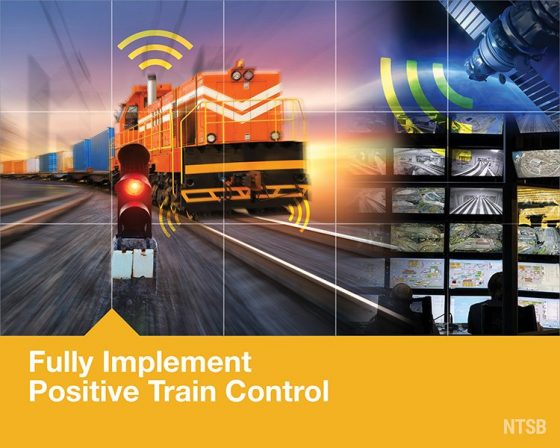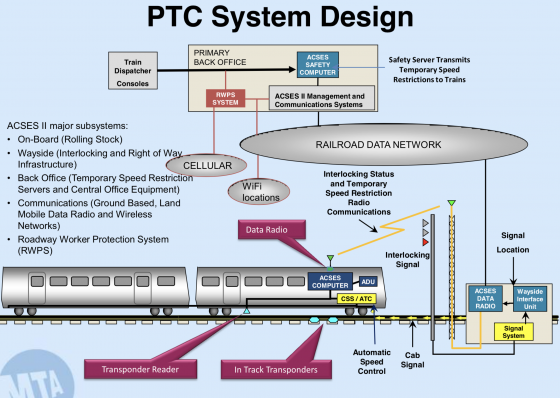
The National Transportation Safety Board (NTSB) unveiled its 2019-2020 Most Wanted List of Transportation Safety Improvements today. The 10-item list is associated with 267 open NTSB safety recommendations that mark critical changes needed in the next two years to reduce transportation accidents, injuries and fatalities, and longstanding safety issues that threaten businesses, professionals and the traveling public.
The list, which is now available online, was unveiled at the NTSB’s press conference in Washington, D.
C.:
- Eliminate Distractions.
- End Alcohol and Other Drug Alcohol Impairment.
- Ensure the Safe Shipment of Hazardous Materials
- Fully Implement Positive Train Control (PTC)
- Implement a comprehensive strategy to reduce speeding-related crashes
- Improve the Safety of Part 135 Aircraft Flight Operations
- Increase Implementation of Collision Avoidance Systems in All New Highway Vehicles
- Reduce Fatigue-Related Accidents
- Strengthen Occupant Protection
- Require Medical Fitness – Screen for and Treat Obstructive Sleep Apnea
“We do not simply come up with these recommendations based on a whim,” NTSB chairman Robert Sumwalt said during his opening remarks. “It’s a data-driven approach based on the results of our investigation and the tragic and senseless deaths we investigate. The NTSB’s most wanted list is written in blood.”
Sumwalt said driving while distracted – from cars to trains – had risen to be one of the most prevalent transportation risks facing American roads, railways, businesses and the general population. Texting-while-driving, he said, can increase the likelihood of a crash between four and 20 times. Sumwalt said the NTSB has called for an outright ban on all mobile devices when operating a vehicle because of the distraction to a driver’s cognitive ability and has urged policymakers to regulate the use of devices like Bluetooth and hands-free phones the same as standard mobile device use.
He also said that nearly 37,000 fatalities were reported on roadways in 2017, the most recent year of data available.
The inclusion of distracted driving dovetails with a study released in January by the Insurance Institute for Highway Safety (IIHS), which highlighted the marked increase in drivers using phones in risky ways. based on an observational survey of drivers in four Northern Virginia communities drivers were 57 percent more likely to be observed manipulating their phones, like when texting or using for purposes other than phone calls.
Based on findings that fatal crash risk is 66 percent higher when manipulating a phone, IIHS researchers estimated that about 800 crash deaths in the United States in 2017 could be attributed to drivers texting or using phones for things other than talking.

PTC also received special focus during the NTSB panel discussion and press conference. Board member Jennifer Homendy said the most recent data is from the third quarter of 2018 and that, “we are closer to installation but there’s a big difference between installation and operational. We’re a ways away from that, unfortunately. The risk is the same 50 years ago as it was a year ago,” she said, referencing the PTC-preventable crash she investigated exactly one year ago in Cayce, South Carolina.
After Congress passed the PTC Enforcement and Implementation Act of 2015 it also authorized the FAST Act, which allocated $199 million in PTC grant funding and specifically prioritized PTC installation projects for Railroad Rehabilitation and Improvement Financing funding. The Association of American Railroads estimates that freight railroads will spend $10.6 billion implementing PTC, with additional hundreds of millions each year to maintain. The American Public Transportation Association has estimated that the commuter and passenger railroads will need to spend nearly $3.6 billion on PTC.
As previously reported, several major transportation providers, such as AMTRAK and the Long Island Railroad have missed critical deadlines for installing PTC.
“In 1961 President Kennedy set a goal to put a man on the moon by the end of the decade and in July 1969 Neil Armstrong and Buzz Aldrin did that,” Homendy said. “In 1969, NTSB investigated its first PTC-preventable accident. In one decade we put a man on the moon but in five decades we haven’t implemented PTC.”


 Earlier this month, Amtrak President Richard Anderson told the
Earlier this month, Amtrak President Richard Anderson told the  100 others during the busy morning commute.
100 others during the busy morning commute.